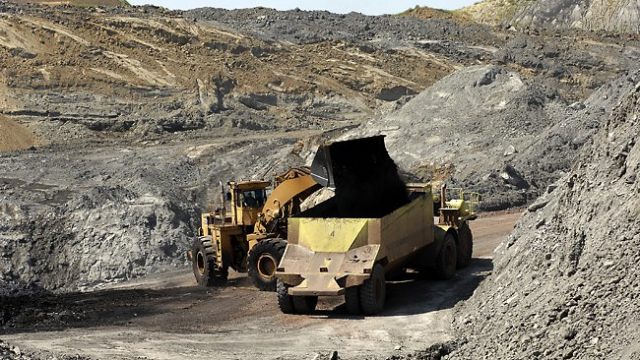Thanks To Fracking And Government Manipulation Coal Stopped Being America's Top Energy Source

For decades America has gotten most of its power from coal. But now, for the first time ever, “king coal” has been supplanted by something else.
No it’s not wind or solar, despite the billions in government subsidies and the policy mandates, but natural gas.
Why natural gas? Because a shale gas revolution brought about mostly by fracking has made gas resources a) significantly cheaper and b) fantastically more abundant.
This data is via SNL energy, and it’s worth keeping in mind that this could just be a seasonal thing. “To some degree, the latest statistics reflect the low-demand season with both fuels showing a big drop from the winter months,” reports SNL. “April’s power production from gas was down almost 9% from the 101,330 GWh produced from gas in January while coal’s power output in April was down more than 33% from the 132,742 GWh produced from coal in January.”
Yet still, it’s clear the market is shifting away from coal and toward gas, but it’s not necessarily market forces which are causing that shift. Fracking has made gas cheaper, and opened up vast new reserves of it, and were that the only reason for coal’s decline so be it. Evolution is the nature of the free market.
[mks_pullquote align=”right” width=”300″ size=”24″ bg_color=”#000000″ txt_color=”#ffffff”]…it’s clear the market is shifting away from coal and toward gas, but it’s not necessarily market forces which are causing that shift…[/mks_pullquote]
But it’s clearly government regulation that’s hurting coal. For instance, according to SNL, coal plant operators “have retired or plan to retire 12.8 GW of coal capacity in 2015.” That’s about 1.6 percent of total U.S. energy production in 2014, and it is mostly being replaced by gas.
The reason for these retirements is government regulation. The Supreme Court recently handed the coal industry something of a pyrrhic victory in Michigan vs. the EPA ruling that the EPA must take the cost of regulations seeking to control mercury emissions into account. While that’s good news for the industry, “The reality is this rule was issued three years ago and most of the compliance is done,” North Dakota Public Service Commissioner Julie Fedorchak told me.
“If you don’t have to factor in costs you can retire coal plants across the board,” she continued.
Fedorchak’s fellow commissioner Randy Christmann said the ruling had come too late. “They’ve already spent hundreds of millions,” he said, referring to coal plant operators. “They may as well finish it now even though the Supreme Court has ruled that it was an unconstitutional overreach.”
“The EPA already won,” he added.
There is some hope that the Supreme Court ruling in Michigan vs. the EPA will mean that the EPA has to take cost into consideration when implementing looming carbon emission restrictions. We’ll see how that plays out, but for now know that coal’s decline isn’t just market forces.
It’s also government manipulation.
That’s a shame because North Dakota has centuries worth of lignite coal that can be used to produce reliable, cheap energy with minimal environmental impact, but we may not be able to use it in the future because of politics.





